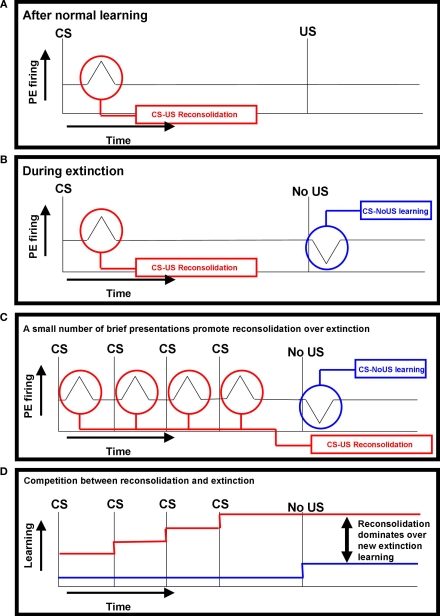Figure 1.
Prediction error responses during learning, extinction and reconsolidation. In these schematics, an upward deflection from the baseline reflects a positive prediction error and a downward deflection represents a negative prediction error (PE). (A) After normal learning – Dopamine neurons come to respond to the conditioned stimulus, the best predictor of the salient outcome (Schultz and Dickinson, 2000). When the CS is presented, the organism is reminded of the salient event (represented in red). (B) During extinction – When the salient event does not occur, a negative prediction error promotes new extinction learning: the formation of a competing CS–NoUs association (represented in blue) (Bouton, 2000; Eisenhardt and Menzel, 2007). (C) A small number of brief presentations promote reconsolidation over extinction – According to the IRH, brief presentations of the conditioned stimulus serve as a reminder and promote reconsolidation of the CS–US association, which overrides any new extinction learning that occurs when the salient event does not occur (Eisenhardt and Menzel, 2007). (D) Competition between reconsolidation and extinction – This schematic shows the competition between representations of the CS–US association (strengthened by reconsolidation) and the CS–NoUS association (formed during extinction). With brief reminder presentations, reconsolidation dominates over extinction.

